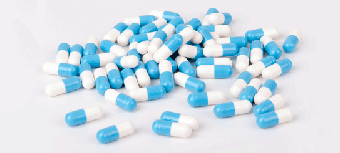
Cryogenic equipment are devices that used in generating, sustaining or operating at a very low temperature. We know that even refrigerators work at low temperatures but the remarkable difference in working of cryogenic equipment and refrigerator is -180 degree centigrade. General equipment that is used in the formation of a complete cryogenic application include a container, cold traps, pressure vessel, purifiers and pipes. Some of the common yet very vital application of cryogenic equipment includes the safe transportation of cooled liquids like liquid nitrogen, liquid oxygen, liquid helium, liquid, liquid argon and many other supercooled gasses. For example, transfer lines offer a very safe means of transferring liquid cryogens from one place to another without any risk to the workers as well as to the machinery.

Physics that studies the production and behavior of objects at a very low temperature is termed as cryogenics and cryogenicists are those who study about the elements that are subjected to extremely cold temperatures. However, there is no exact definition on what point of temperature the refrigerators stop and the cryogenic equipment start. However, the scientists have provided their assumptions that if a gas can be liquefied at -150-degree centigrade (-238 degree Fahrenheit) or below that temperature then they are cryogenic gasses. But the National Institute of Standards & Technology of the United States has defined -180 degree centigrade (-292 degree Fahrenheit) as standard temperature of cryogenic equipment and this definition looks more logical as the normal boiling point of the permanent gases like helium, hydrogen, neon, nitrogen and oxygen lie underneath the baseline of -180 degrees centigrade.

Vacker KSA supplies a number of effective cryogenic equipment in all over the nation and most importantly to most of the major cities in KSA namely Dammam, Riyadh, Al Khobar, Jeddah, etc. But if you want your cryogenic equipment to be effective then proper insulation must be done. This is the key to the effectiveness of any cryogenic components, ensuring that the desired low-temperature level is well maintained within the equipment. Likewise, insulation will further protect the users of the equipment from the severe temperature levels along with the harmful materials that are contained by the equipment. Most common liquids that are regularly used in the operation of cryogenics are nitrogen and helium. Liquid helium requires an extremely low temperature. We supply you with a variety of different cryogenic equipment, mainly with the piping system, the valves and the gasses. In order to maintain the desired level of temperature, most of the cryogenic systems require a certain pressure level. Scot Sir James Dewar is the inventor of the most commonly used cryogenic equipment called the Dewar flask. It is a special type of container that contains an almost vacuum holding chamber that prevents the fluctuation in temperature as a matter of heat transmission from its contents because of convection and conduction. This device also nullifies the possible heat transmission because of radiation by the use of a reflective coating on the inner surface of the flask. These flasks are selected for holding various types of cryogenic gasses.
Various applications of the cryogenic equipment that Vacker KSA supplies may include: cooling and freezing, enhancing of some chemical reactions, medical and chemical storage and other metal processing. In modern science, a variety of liquid cryogens are being used as fuel for rocketry and aerospace. These cryogenic equipment and cryogens are used in many of the research laboratories in a variety of operations.


Cryogenic Racks :- Vacker KSA supplies inventory management systems of the highest quality in today’s market. We are one of the leading suppliers of ...

Cryogenic Spares :- Cryogenic spares are instruments that are used for optical cryostats, ultra low-temperature equipment and superconducting magnets. ...

Liquid Nitrogen Tanks :- The engine that is powered by liquid nitrogen that is stored in a tank is known as liquid nitrogen tank. Traditionally, the he...

